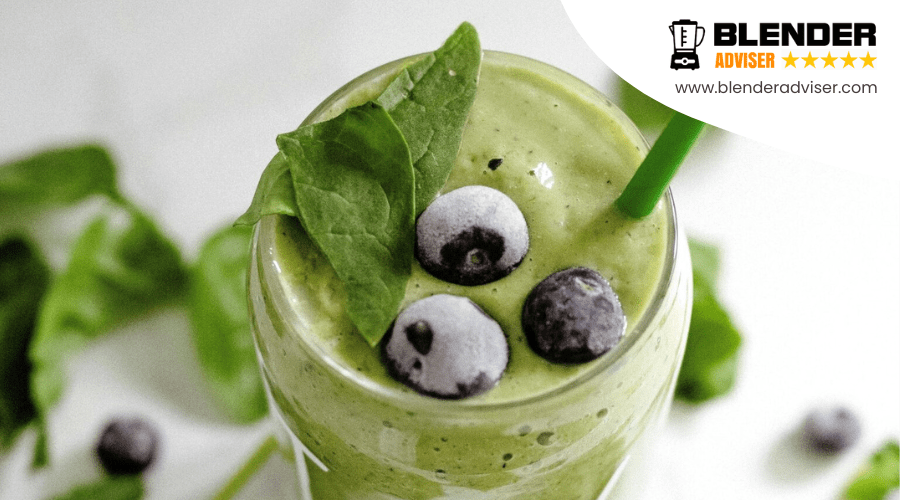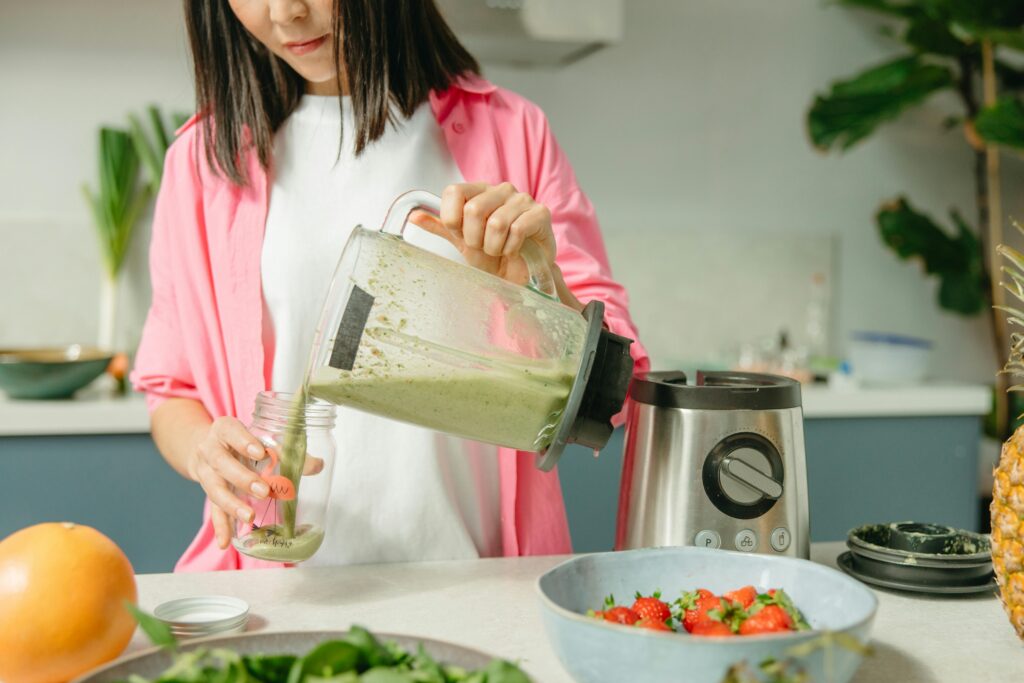You’ve blended spinach for its mildness, kale for its nutrients, and even ventured into the realms of Swiss chard and collard greens for their unique benefits. But when it comes to maximizing the health perks and flavor of your green smoothies, the choices can be overwhelming.
Each green brings its own set of vitamins, minerals, and antioxidants to the table, along with a distinct taste that can either make or break your smoothie experience. The question then arises: which greens truly offer the best of both worlds for your smoothies?
Stick around, and let’s uncover the greens that not only boost your health but also delight your taste buds, without compromising on either.
Understanding Green Smoothies
Green smoothies, packed with leafy greens like spinach and kale, offer a nutrient-rich start to your day. You’re blending not just any ingredients, but a powerhouse of vitamins, minerals, and fiber that come from the freshest of greens and complementing fruits.
Imagine sipping on a mixture where spinach meets apple, or kale dances with banana. It’s not just a drink; it’s a meal that fuels your body with everything it needs to thrive.
When you toss these greens into your blender, you’re also adding a variety of other vegetables, perhaps even Swiss chard, collard greens, or bok choy, each bringing its unique set of nutrients to the table. What’s remarkable about green smoothies is that they retain the fiber from these vegetables and fruits. Unlike juices, which extract and leave behind the fibrous material, smoothies keep it in, ensuring you’re not missing out on an essential component of a healthy diet.
Dive into the world of smoothies by exploring the top greens that’ll transform your blends into nutrient powerhouses. When you’re aiming for a healthy and nutritious drink, not all leafy greens are created equal. Spinach, with its rich vitamins A, C, E, and K, and mild taste, is a go-to for many. It seamlessly integrates into your smoothie, giving it a nutritional boost without overpowering other flavors.
Kale steps in with its slightly bitter taste, packed with vitamins A, C, and K, along with fiber, adding a substantial nutritional punch to your recipes. For a more earthy flavor, Swiss chard is your ally. Loaded with magnesium, iron, and vitamin K, it’s as versatile as it’s healthy.
Don’t overlook collard greens; their mildly bitter taste and high fiber, calcium, and iron content make them a nutritious choice for your smoothie blends. Lastly, beet greens offer a unique flavor and vibrant color, along with a nutritional profile similar to spinach and Swiss chard, making your smoothies not only tasty but visually appealing too. These greens are your best bet for creating versatile, healthy smoothies that are as nutritious as they’re delicious.
Health Benefits of Green Veggies
You’ve learned about the top greens for your smoothies; now let’s explore how they boost your health.
These nutrient-rich vegetables aren’t just for taste—they’re powerhouses that can enhance your immune system.
Including them in your diet could be your first step toward better health and disease prevention.
Nutrient-Rich Profiles Explored
Exploring the nutrient-rich profiles of certain vegetables reveals why they’re considered powerhouses for health benefits when added to smoothies. Kale, for instance, is not just a leafy green; it’s a source of vitamins K and C, calcium, and fiber, offering antioxidants that protect your body. Similarly, spinach provides an easy blend with its mild taste, packed with potassium and iron to support vision and blood pressure. Let’s not forget about the unique tastes and textures that arugula, Swiss chard, and broccoli bring to your smoothie, along with their own set of nutrients.
| Vegetable | Key Nutrients |
|---|---|
| Kale | Vitamins K, C, Calcium, Fiber |
| Spinach | Potassium, Iron |
| Arugula | Vitamins, Calcium, Proteins |
Incorporating these greens into your smoothies enhances not just flavor but also your nutrient intake.
Boosting Immune System Health
After learning about the nutrient-rich profiles of greens like kale and spinach, let’s focus on how these vegetables boost your immune system health.
Green vegetables are packed with vitamins and minerals essential for maintaining a robust immune system. They’re loaded with antioxidants and phytonutrients, which strengthen your body’s defenses against illnesses.
By incorporating a variety of green veggies into your smoothies, you’re not just enjoying a delicious drink; you’re also boosting your overall immunity. This contributes to a balanced diet, ensuring you get all the nutrients needed for optimal immune function.
Including greens such as collard greens, bok choy, beet greens, and broccoli in your smoothies provides those essential nutrients critical for supporting your immune system health.
Tips for Blending Greens
To ensure your green smoothies are both delicious and nutritious, start by using cold ingredients and a high-speed blender for the smoothest blend.
Incorporating green leafy vegetables into your smoothie recipes not only boosts their nutritional value but also ensures you’re getting a variety of plant compounds essential for your health. However, greens like spinach and kale can have a bitter taste that mightn’t blend well in fruit smoothies without a little help.
To counteract the bitterness and enhance the blend, add ingredients with high water content, such as cucumbers or celery, which also contribute to a smoother consistency. Incorporating healthy fats from avocados or seeds, and a dash of vitamin C from citrus fruits can’t only improve the taste but also aid in the absorption of nutrients.
Don’t forget to use frozen greens or add ice to keep your smoothie cold and refreshing.
Enhancing Flavor Naturally
Naturally enhancing the flavor of your green smoothies can be as simple as adding a mix of sweet and tart fruits like bananas, mango, and pineapple. These fruits aren’t only delicious but also help in masking the mild taste of leafy greens, ensuring you get the best of both worlds in your delicious green smoothie.
When it comes to making green smoothies taste great, consider these tips:
- Incorporate nut milks, yogurt, or juices to balance and enrich the flavor of your blend.
- Use coconut water as a refreshing base that complements both the leafy greens and fruit.
- Mix stone fruits and berries with greens for a nutrient-rich, flavorful smoothie.
- Add healthy fats like avocado, nut butter, or seeds to smooth out textures and enhance absorption of vitamins.
- Consider using frozen fruits to give your smoothie a creamy texture and a cool, refreshing taste.
Nutrient Density Comparison
When comparing the nutrient density of various greens for smoothies, it’s essential to consider how each contributes unique vitamins and minerals to your diet. Kale stands out as a powerhouse, rich in vitamins A, C, E, and K, making it incredibly nutrient-dense and a perfect base for your green concoction. Spinach follows closely, packed with potassium, iron, and antioxidants, offering not just nutrient density but also a smooth texture for blending.
Swiss chard brings a colorful twist to smoothies, loaded with magnesium, iron, and vitamin K, ensuring you’re not just consuming greens for the sake of it, but actually enhancing your nutritional intake. Collard greens, though slightly under the radar, provide an excellent source of fiber, calcium, and iron, contributing significantly to the overall nutrient profile of your smoothie.
Lastly, don’t overlook beet greens; they’re as nutrient-rich as spinach and Swiss chard, packed with essential vitamins and minerals, adding both color and a nutritional punch to your blend.
Incorporating these greens into your smoothies isn’t just about meeting your daily vegetable intake; it’s about maximizing the vitamins, minerals, fiber, and antioxidants you consume in the most nutrient-dense way possible.
Creative Green Smoothie Recipes
Now that you’re familiar with the variety of greens that can boost your smoothies, let’s get creative with your blends.
We’ll start with Green Smoothie Basics to ensure you’ve got the foundation right, then introduce Exotic Greens Blend for a twist, and wrap up with essential Smoothie Prep Tips to streamline your process.
These points will help you craft delicious, nutrient-packed smoothies with ease.
Green Smoothie Basics
Diving into the world of green smoothies, you’ll discover that blending a variety of leafy greens with fruits and liquids can unlock a treasure trove of nutrients and flavors. As you embark on your green smoothie journey, consider these points:
- Green Vegetables to Add: Spinach and kale top the list due to their nutrient density.
- Healthy Greens for Smoothies: Swiss chard and collard greens offer a rich source of vitamins.
- Adding Greens: Experiment with romaine, arugula, and microgreens for variety.
- Smoothie Ingredients: Combine green leaves with your favorite fruits and a liquid base.
- Greens to Your Smoothies: Introducing veggie smoothies into your diet is a great way to boost your intake of essential nutrients.
Exotic Greens Blend
Exploring beyond the basics, try adding exotic greens like watercress and dandelion greens to your smoothies for a unique blend of flavors and nutrients. These greens aren’t just about their vibrant colors; they pack a punch of zesty, peppery, and tangy tastes that can completely transform your smoothie experience. Here’s a quick guide to get you started:
| Green | Taste |
|---|---|
| Watercress | Peppery |
| Dandelion | Bitter, tangy |
| Purslane | Slightly sour, lemony |
| Sorrel | Tangy, citrusy |
Incorporating these exotic greens into your smoothies is not only a culinary exploration but also a way to boost your intake of phytonutrients and antioxidants. Step up your smoothie game and surprise your palate with a new flavor profile.
Smoothie Prep Tips
Mastering the art of green smoothie preparation can transform your health and flavor experience, offering a world of creative recipe possibilities. When diving into the vibrant world of green smoothies, consider these tips:
- Incorporate frozen greens like spinach and kale for smoother blending and a milder taste.
- Experiment with flavor enhancement using fruits like mango, pineapple, and bananas.
- Add healthy fats such as avocado and chia seeds for smoother textures and better vitamin absorption.
- Mix up leafy greens, vegetables, fruits, and herbs to ensure a nutrient variety.
- Try beginner recipes like kale with mango-pineapple-banana or spinach with mixed berry-apple-yogurt to kickstart your journey.
With these tips, you’ll unlock the full potential of smoothie blending, crafting delicious and nutritious green smoothies every time.
Conclusion
Choosing the right greens for your smoothies can make a world of difference in both taste and nutritional value. Spinach, kale, Swiss chard, collard greens, and bok choy are all fantastic options, each bringing unique benefits to the table.
Don’t forget to throw in some herbs for an extra flavor kick. With these tips and a bit of creativity, you’ll be whipping up nutrient-dense, delicious green smoothies in no time. Remember, the best smoothie is one that you enjoy and meets your health goals.








